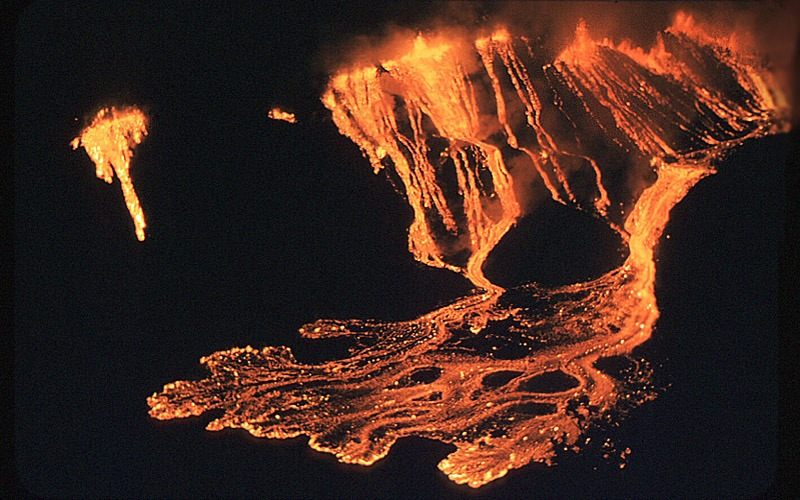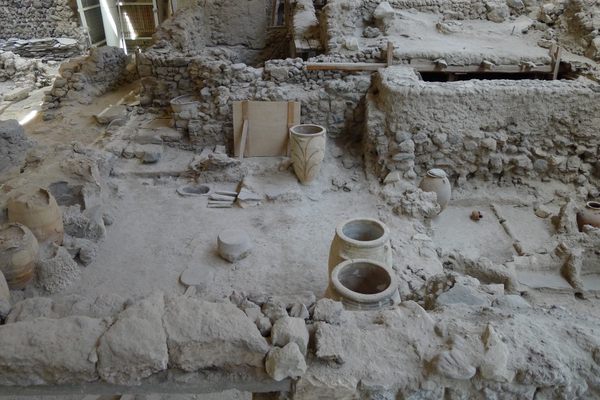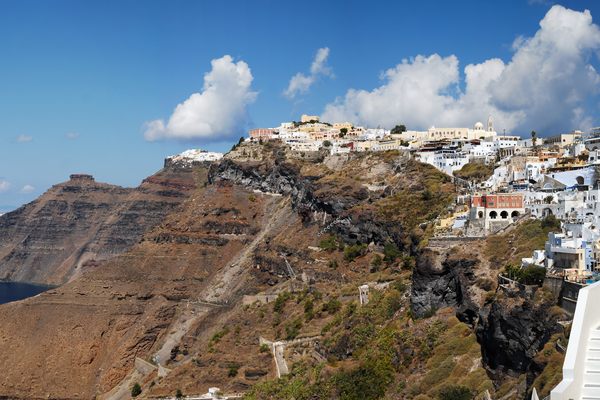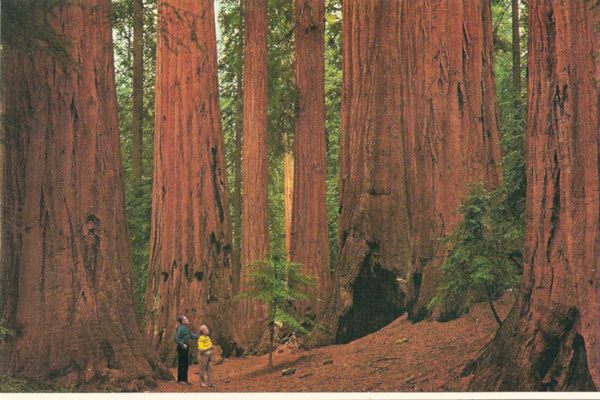How Forests Rebound From Being Covered in Lava
It all starts with algae.

In August 1959, the earth beneath Hawaii shook, and three months later Kīlauea Iki, a smaller crater next to the expansive dent in the top of Hawaii most active volcano, exploded, sending fountains of lava 1,900 feet high.* For a month, lava spurted out of the volcano and dripped down the mountain in red-hot rivers. Finally, in December, the eruptions stopped.
In January, as soon as they could, two botanists climbed into the devastated area and marked off small plots of ground, about 30 feet by 30 feet. Over the next four years, and again in 1966 and 1968, they returned to identify and count the plants that were growing there.
When wildfires burn hot through trees and grass, they still leave behind parts of plants and seeds hidden beneath the ground. But when lava flows through, the devastation can be complete. The botanists wanted to know what kind of plants would colonize the lava first and which type of lava they’d find most easy to settle on. But their main question was one with a long horizon: After a volcanic eruption, how long does it take a forest to develop?

Today, on Kīlauea, lava is still actively streaming down the mountain, with little sign of stopping.* So far, more than nine square miles of the island have been buried in volcanic material, and many people have lost their homes. But eventually Kīlauea will quiet again, and the process of recovery will began for both people and plants.
It will be a long and slow process, and there’s no one answer as to how long it will take. “The main thing we’ve learned in recent times—in the last 50 years or more—is that it all depends,” says Bruce Clarkson, a plant ecologist at the University of Waikato in New Zealand. The nature of the lava or the ash, the climate, and the amount of water available all determine the future of a place volcanic activity has made barren. In Hawaii, lava flows are linear features, Clarkson points out: They begin at the summit of a high mountain and drip straight down to the sea. The climate at the top of the flow can be entirely distinct from the climate halfway down or at the edge of the island.
If a volcanic eruption spews mineral-rich ash in the area around it, plants can grow back relatively quickly. In 1980, the eruption of Mount St. Helens in Washington left behind a wasteland of ash, where today there are fields of lupines. But on lava flows, where plant life has to start again from scratch, the process is much slower.

Nooks, crannies, and crevices can collect dirt, water, and seeds. Eventually, ferns and other plants can start to grow. But for soil to form on the top of the lava flow, the rock has to weather down. In Hawaii, the soil quality of the individual islands depends on how long ago they were formed and how quiet their volcanoes have been. “On the oldest island, you have really deep, red soil,” says Darlene Zabowski, a professor at the University of Washington and co-author of Celebrating Soil. “You can go from one island to the next and see huge changes in the ecosystems as they get older and older.” It’s possible, though tricky, to reverse engineer the age of a lava flow from the vegetation growing on top of it.
The botanists who were observing the plants on Kīlauea in the 1960s, Garrett Smathers and Dieter Mueller-Dombois, had some idea what they might find, since previous work had established that usually algae are the first colonizers of lava and lichen are the second. In the lava lake area, where devastation had been complete, they found that, indeed, algae were always the first colonizers and lichen usually came second. The picture was more complicated than that, though. Mosses and ferns might show up at the same time as algae or along with the lichens. Native flowering plants would come later.

Still, it was a slow process. “The vegetation cover was as yet so small in year 9 (1968) that on a superficial view, the surface looked practically barren,” they wrote. But it had been progressing in a distinct pattern: As the lava cooled, the plants advanced in concentric circles towards the center of the crater, the last place to cool down.
Studying plant succession in devastated areas like this one can give scientists an idea how, fundamentally, ecosystems work and how plants might have colonized land millions of years in the past. It takes hundreds, even hundreds of thousands of years, for forests to fully take over the places where lava stripped down a mountain. But it always will.
“One of the biggest misconceptions is that things won’t recover,” says Clarkson. “It’s astounding how nature can repair itself given half a chance.”
*Correction: This post previously misspelled the name of the volcano Kīlauea and the crater Kīlauea Iki.

























Follow us on Twitter to get the latest on the world's hidden wonders.
Like us on Facebook to get the latest on the world's hidden wonders.
Follow us on Twitter Like us on Facebook